Everything is getting smarter. Especially for things related to the Internet of Things, its huge market growth potential has long been predicted. The new possibilities of the network and the huge data that comes from it provide countless product visions. For example, at breakfast, the kitchen equipment prepares fresh coffee and hot bread; when washing, the washing machine automatically stops the laundry before red dyeing all the white clothes in pink.
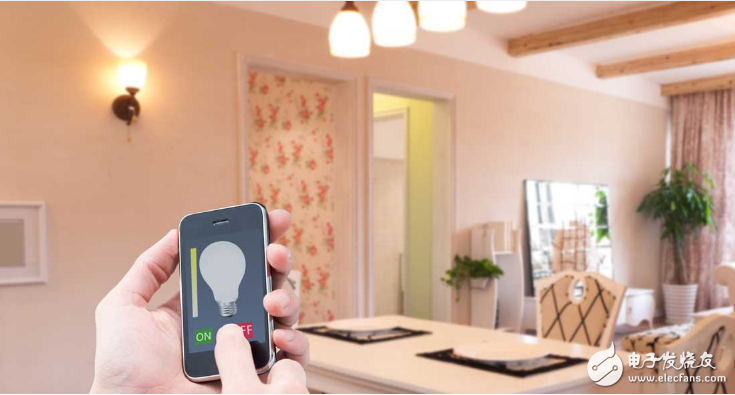
Everything becomes "smart". Especially for things related to the Internet of Things (IoT), its huge market growth potential has long been predicted. The new possibilities of the network and the huge data that comes from it provide countless product visions. For example, at breakfast, the kitchen equipment prepares fresh coffee and hot bread; when washing, the washing machine automatically stops the laundry before the red socks dye all the white clothes pink; in addition, there is a lighting system that automatically adapts to the environment - Whether at home, in a shopping mall or on the street.
With the introduction of light-emitting diodes (LEDs), the thinking and design process has undergone tremendous development. In order to be able to use more effective control systems, we must learn new knowledge of electronics and need to produce new designs and new features. The possibilities of using light in a smart way are almost endless.
For example, a luminaire is an ideal sensor node. Each room has lights, and some fixtures are usually located in a central location. Adding more intelligence through sensors is easy, such as light quality, temperature, humidity, air quality or presence. This data can be collected centrally and transmitted to other network devices in the room, and the system responds only when the correct data is collected.
The right combination is very important: how to build a bridge between the physical world and the digital world? What are the requirements for placing the sensor in the luminaire?
Data collection and “smart†use: creating awarenessView the basic elements of most buildings, including walls, doors, windows, furniture or gathering areas, air conditioning or ventilation systems, and lighting, etc. Given the distribution of electrical networks and the fact that each room has lights, the lights are taken for granted. "Hot spot." why? Because the luminaire has everything it needs: electricity, the central location of the room, and people.
What are you going to detect? This is a manufacturer's consideration, they have to use unique knowledge to develop a sales strategy, and this strategy cannot be copied quickly.
Air quality and humidity are ideal parameters that can be added to building automation, which saves energy and increases system efficiency. However, proactive lighting control also ensures that employees are dynamic and flexible throughout the working day, keeping employees motivated. Intelligent sensors and control concepts have become increasingly important for many of ENERGY STAR and other international standards.
Of course, the use of sensor technology will increase the bill of materials (BOM) cost. However, what we should ask here is: “What added value can this create?â€, “Which characteristics can open up new markets?†Detection of volatile organic compounds (VOC) in the air, fire detection The early warning system, or the complete spectrum of Human-centric lighting (HCL)? Handheld device users complain less about the hardware, but are dissatisfied by the fact that the device does not have a sensor, causing the application to fail to open new possibilities.
Detection: collecting dataTo bring wisdom into the device, the right sensor is an important factor. Mobility triggers the reaction - collecting data allows the user to react in a specific way. Austrian Microelectronics (AMS) offers intuitive solutions: Smart Light Manager and Smart Light Director. With this sensor solution, you can not only detect light, but also react directly to differences in color temperature and brightness. At the same time, the system can also be used as a sensor bridge interface to connect more sensors.
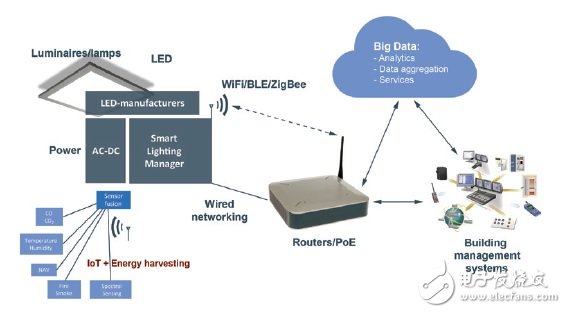
Figure 1 Sensor technology in the luminaire as the central component of the Internet of Things.
For example, the above mentioned temperature measurement, presence measurement, humidity measurement, air quality measurement (VOC) or barometric pressure measurement options. This data can be used for light quality or the room itself: active brightness control based on sensor measurements, dimming the light when there is enough sunlight in the window, or actively measuring and controlling the color temperature for active daylight control. Other sensor data is transmitted to the connected equipment and used for building automation: air quality data can be transmitted to the ventilation system for automatic control options.
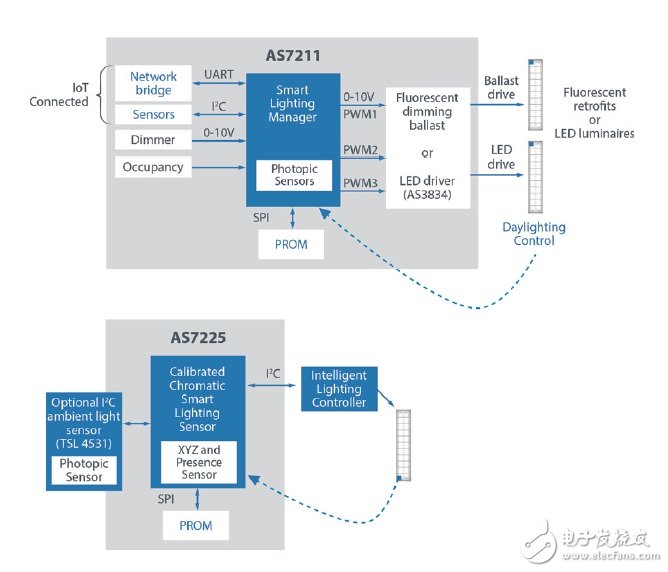
Figure 2 Smart Light Manager AS7211 integrated sensor for light source detection control and adjustment; Smart Light Director AS7225 microcontroller has direct I2C output.
Industry standards, including I2C interfaces or UART connections, simplify connectivity and expansion systems. The UART can also use the RS-485 network connector as a data communication interface, which can be used very quickly. This provides a simple solution that also includes a control center that collects and processes data, whether wireless or wired.
Proactive control: leveraging dataThe traditional lighting industry prefers standard products because it can be assembled out of the box and can be assembled into a design product. It is sufficient to have a know how to design, output and perform. However, as the demand for IoT into fixed devices continues to grow, engineers are increasingly asking themselves these questions: What components can easily achieve their goals without knowing the techniques of color measurement, control, or even optics? How much expertise is needed to make an IoT project? And how much knowledge does the product contain?
Intelligent and integrated sensor solutions enable this task, such as Correlated Color Temperature (CCT) control, color control, brightness management, and more. For example, a dynamic daylight control system can be built between several luminaires, or the brightness (Lux) can be adjusted based on incident light from the window. People-oriented lighting or energy-saving projects can be implemented quickly. In addition, these solutions provide the flexibility to allow creative developers to use their knowledge as they wish, to leverage their dimming expertise and leverage actual sensor data. Everything is fine.
One way is to use the Austrian Microelectronics Smart Lighting Manager's integrated pulse width modulation (PWM) output 0~10V, which directly affects the output value. If you want to be more "smart", you can automatically perform dimming or adjustment through a calibrated feedback loop. All the lamps in the room must run 5,000K? No problem, the integrated sensor can detect current values ​​and make dynamic adjustments. Whether or not LEDs from different suppliers are used, or LED color output ages over time, as long as the LEDs in the warm white and cool white combinations can still reach this temperature, the sensor can provide the corresponding CCT adjustment.
But what if you have already used your own microcontroller and want to apply this knowledge yourself? If so, Austrian Microelectronics' Smart Light Director is the product of choice. This solution uses a direct I2C interface to send the corresponding chrominance values ​​directly to a separate controller. Manufacturers can use dynamic controls themselves, such as Dali.
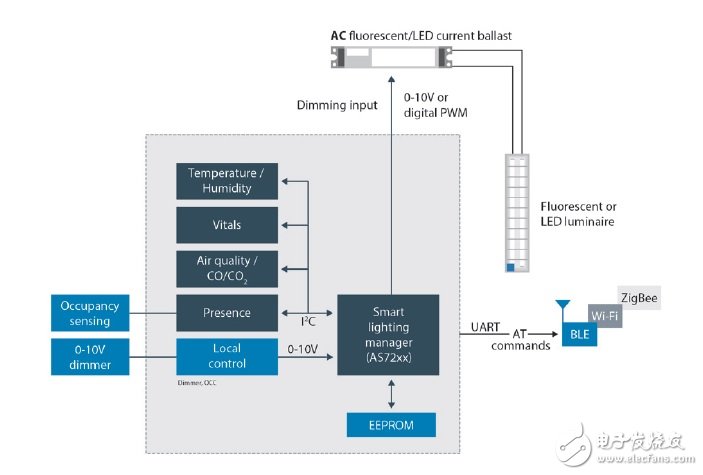
Figure 3 Quickly and simply combines sensors and lighting.
Network: Intelligent processing of data.The war in the lighting market has a well-known focus: price pressure. There are more and more low-cost suppliers bringing new solutions to the market, but they don't care much about quality requirements. However, intelligent networking systems not only create unique features, but also open new markets through targeted knowledge and partners, and drive continued growth.
With the out-of-the-box network concept, the "local" detection and control functions can be directly transmitted to the cloud, so the problem of lighting networking can be directly solved. Figure 4 shows that through the integrated UART interface, Bluetooth low energy (BLE), Wi-Fi or ZigBee can be quickly connected to a typical input device. Simple AT commands facilitate communication between devices and ensure that links can be established in a short period of time using standardized code, including typical wireless components such as Bluetooth (BLE/Smart), Wi-Fi and ZigBee, and wired Ethernet networks. Complex stacks and protocols.

Figure 4 Sensor technology becomes the bridge between physical space and the digital world (the cloud).
Reference codes can be used to simplify complex communication between lighting and the network. The digital addressable lighting interface (DALI) or the classic RS-485 can also be used via the UART interface. The reference design also shows that typical instructions such as Set_Lux_Target, Read_Lux_Level, or Set_Luminaire_Output_Level can be quickly resolved using an Android-based mobile device or iPhone. Even the implementation of a graphical user interface (GUI) is very fast and easy.
Therefore, it is possible to build a bridge between physical space and the digital world in a short period of time—that is, the Internet of Things lighting solution. Prototypes can be built in 24 hours using the Smart Lighting Integration Kit, the Smart Light Integration Kit (SLIK).
to sum upOnce the new idea of ​​“out of the box†gets noticed, future lighting designers will be able to choose between price, performance and functionality. However, the question is how can we stand out from the competition? Cloud-based solutions with digital added value can help solve this problem, and users can see how these newly acquired data can be actively used. Habits have changed, new applications (Apps) have emerged or customer needs are constantly changing, and only those who can actively respond to this change have a real customer advantage.
BIOTEPT NEMA and IEC Standard Stainless steel washdown AC motors have exterior components of 304 stainless steel to provide maximum corrosion resistance in severe-duty and washdown environments. The motors` exterior is completely paint- and coating-free and sealed against moisture and condensation to protect internal components.
Brands
DAYTON, LEESON, MARATHON MOTORS and U.S. MOTORS

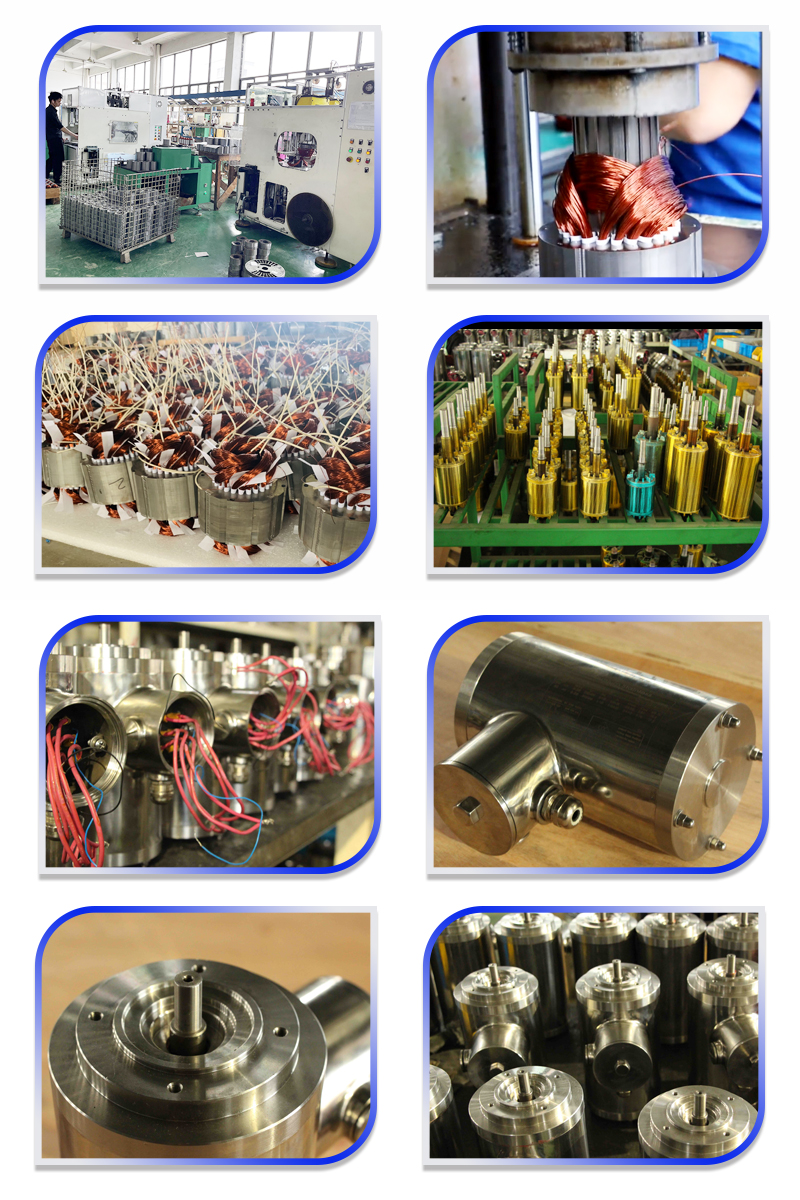
Stainless Steel Motor,Washdown Duty Motors,Stainless Steel Ip69K Motors,Stainless Steel Washdown Nema Premium
Ningbo Biote Mechanical Electrical Co.,Ltd , https://www.biotept.com